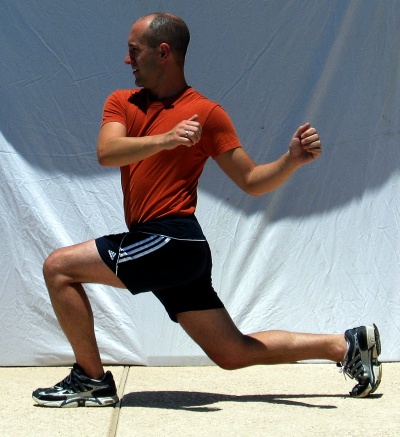Sports Rehabilitation Basics
Sports rehabilitation is a vital component to recovering from any type of sports injury. As an athletic trainer, I am constantly amazed at how the body responds to rehab, and the benefits that come with regular, focused exercise. In this section of the site, you can learn about rehabilitation basics, the science and why behind exercises for prevention, recovery, and performance. I'll also share some of my own rehab philosophies, developed over the last 12 years working as an athletic trainer.
Whether you want to know all of the nitty gritty details of how the body works and responds to rehab, or are just looking for tips and pointers to maximize your efforts, you'll find that information here.
Everything is Connected
Quick Tips
Whether you are exercising for prevention, recovery, or performance, quality over quantity should always be the rule. Make sure to monitor your form, and maintain good muscle activation and mechanics. One perfectly performed rep is worth 100 with poor form!
One of the most important concepts that you need to understand when
talking about any type of exercise or sports rehabilitation
is that everything in the body is connected. From your
big toe up to your hips, through your shoulder blade and top of your
head, everything works together, and is intimately connected. That means
that an ankle
sprain can have an effect on how well you can squat, and even how
much power you have when you throw. Sounds crazy, I know, but it is
true.
Because of these interconnections, movement, performance, and
ultimately sports rehabilitation comes down to two main areas - Mobility
and Neuromuscular Control.
Each is described briefly below.
Mobility
Mobility is the amount of motion available within specific joints of the
body. Mobility is different from flexibility, as it takes both joint
motion and muscle
flexibility into consideration. Tight muscles and stiff joints will
reduce the amount of motion that is available when performing tasks.
Sometimes these
limitations are very subtle and may not be noticed, and other times
they are very apparent, such as after a sports injury. Regardless of
whether they are
small or large, mobility restrictions play a huge role in normal
function.
Neuromuscular Control
Neuromuscular control is a term that encompasses several different functions within the body. Simply put, it is the interaction between the central and peripheral nervous system, the muscles and joints. These interactions fall into two primary categories. Information coming into the system, and responses being sent out to the muscles.
Also known as afferent information collected by the peripheral nervous system and transmitted to the central nervous system for processing and efferent signals sent from the central nervous system to the muscles and joints signals, this information is how your body knows which muscles to contract and relax - for simple things like tying your shoes, or complex sports skills like throwing a fastball.Hardware and Software
Think of neuromuscular control like the operating system or software for your computer. It runs everything behind the scenes, and when it works correctly, you hardly even know its there. Muscles and joints (and mobility) are like the hardware that is controlled by the sensorimotor system. Unfortunately, when it doesn't work just right, problems arise.
Keys to Sports Rehabilitation
Mobility and neuromuscular control are the primary focus for most sports
rehabilitation activities, whether prevention, recovery, or performance.
Restoration
of mobility, and correcting mobility restrictions should be a
number one priority with any exercise program. Without normal mobility,
the muscles cannot
function efficiently, and so neuromuscular control problems cannot
be corrected.
Once mobility deficits are addressed, neuromuscular control takes
center stage, and should focus on improving muscle stabilization, muscle
activation
patterns, and ultimately strength, balance, and coordination.
Integrated Systems
Neuromuscular control involves the proprioceptive, vestibular, and visual systems for normal functioning. Proprioceptors provide information about the positions of your joints, and when your joints move. The vestibular system provides information on balance and posture, and is dependent on the inner ear. And the visual system works to provide information from the environment. All three systems work together to provide information that the sensorimotor system organizes. Amazing!
Understanding some of the key concepts of sports rehabilitation will allow you to focus on your goals - whether for prevention, recovery, or performance. And the information on this site will help guide you to a stronger, more efficient, balanced body.
Sports Rehabilitation Basics -- Return to Sports Injury Rehab Home





